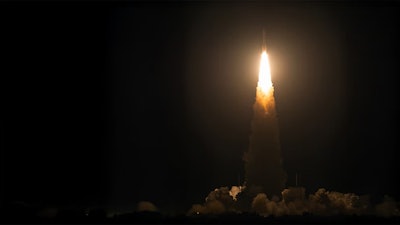
MELBOURNE, Fla. — The L3Harris-built advanced Navigation Technology Satellite-3 (NTS-3) has successfully launched from Cape Canaveral Space Force Station on a United Launch Alliance (ULA) Vulcan rocket.
NTS-3 is the Department of Defense’s first experimental navigation satellite system in nearly 50 years. It is also the first fully reprogrammable Positioning, Navigation and Timing (PNT) satellite that will provide warfighters with responsive and flexible capability to ensure mission success.
Ed Zoiss, President, Space and Airborne Systems, L3Harris, said, “The need for accurate and uninterrupted PNT has never been more essential to our warfighters who operate in GPS-denied environments. The successful launch of the NTS-3 system is the first step in updating 20th century technology to help address current threats to our national security.”
L3Harris delivered NTS-3 three times faster and at lower cost than similar programs by leveraging industry standard form factors and interfaces. NTS-3 is also smaller and lighter than traditional PNT satellites and will operate at a higher altitude.
Once on-orbit, the satellite will perform experiments to shape the future of U.S. space-based PNT capabilities. NTS-3’s payload technology is modular, scalable and can be configured to fly on different satellite buses. This technology will be instrumental in achieving future affordability goals and mission timelines.
L3Harris propulsion and spaceflight avionics on the ULA Vulcan rocket were critical to delivering NTS-3 to a precise orbit. The rocket used two L3Harris RL10 engines, providing a combined total thrust of nearly 48,000 pounds. The rocket also used 12 MR-107 thrusters to help steer the upper stage and helium tanks that are essential to the rocket’s operation. Key company spaceflight avionics include controllers, data acquisition units, and the T-740U Transmitter, which are crucial for vehicle control and data relay during launch.






















